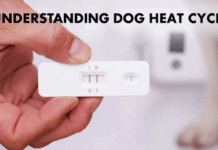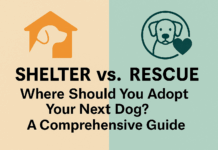Last Updated on March 20, 2023 by Dogs Vets
6 Natural Ways to Unlock Relief for Your Dog’s Anxiety
Our dogs experience anxiety in much the same way we do, especially when they’re around other people or pups they don’t know. As well, some pets who are separated from their owners may become nervous and anxious.
If your dog seems to be experiencing anxiety or difficulty sleeping, there are a number of natural medicine options available.
Herbal remedies, aromatherapy, exercise therapy, massage therapy, music therapy, and CBD oil can all provide relief for canine anxiety.
By combining these different remedies, it is possible to soothe your dog’s stress and make them more relaxed. Learn the benefits of each remedy below to help you determine which treatment option may be best suited for your pup.
Herbal Remedies
Herbal remedies have been used for centuries to help promote health and wellness in humans and animals. If your dog is in need of calming, relaxation, and better sleep, try these three herbs.
Chamomile is one of the safest and most popular herbal medicines for calming anxious dogs. It possesses natural sedative properties that have been shown to ease anxiety, relieve stress, and improve sleep.
Valerian root, like chamomile, is another commonly used herb to alleviate dog anxiety and has been recommended by integrated medicine veterinarians.
It is thought that valeranic acid, a natural compound found in valerian, is primarily responsible for the root’s sedative effects.
Lavender oil is a mild herb with a tranquil aroma. It’s used in everything from teas to supplements and is often employed to help relax anxious canines.
You can administer an herbal remedy to your dog in the form of an encapsulated supplement, or you can purchase the loose-leaf herb to create a tea that can be blended into your dog’s water or wet food.
CBD Oil For Dogs
CBD is a natural cannabinoid compound derived from cannabis plants. It has become a popular remedy for dogs because of its ability to alleviate stress and anxiety by positively interacting with the body’s endocannabinoid system.
Research shows that it is safe for dogs to take both, topically and orally.
Your dog’s body weight and therapeutic need will determine how much CBD you should give them. The first step in getting your dog started is to use a CBD oil for dogs dose calculator.
Once you know how much CBD oil your dog should take, you can administer it orally using a dropper. Alternatively, you can also add their CBD dose to their food or water bowl.
If your dog is experiencing sleepless nights in addition to daily stress, you can give them a portion of their dose during the day and the other portion in the evenings, about an hour or two before bedtime.
Aromatherapy
Aromatherapy is a holistic approach to treating anxiety in dogs that is becoming increasingly popular. Unlike herbal remedies, aromatherapy does not require your dog to consume the medicine.
Instead, it utilizes essential oils such as lavender, rose, chamomile, and bergamot to relax your dog through scents.
There are a couple of ways to take advantage of aromatherapy that can help your doggy feel better.
First, you can rub one or all of these natural oils on your dog’s bed or favorite blanket. There are even heating pads available that are already infused with these oils. This will help them to calm down and relax.
You can also use the traditional aromatherapy method of heating your preferred essential oils in an aromatic diffuser. These devices atomize the essential oil scents and release them into the air, infusing pleasant and calming scents throughout your home.
Exercise
One of the key ways recommended by doctors for humans to relieve stress and anxiety is to get active. The same is true for dogs!
Both our species need exercise to stay healthy, and this includes our mental and emotional health.
Dogs, especially, need physical activity to help them keep fit, healthy, and happy. Exercise reduces tension and uneasiness in dogs by letting them release some of that nervous energy.
Workouts don’t have to be intense and can range from a calming stroll around the block or taking a dip in the pool to playing catch for ten or fifteen minutes a day.
Some dogs do like more vigorous workouts, especially if they’re still young, in which case you can take them on a run or enroll them in an agility training class.
Every dog is different, so be sure to start any new workout regimen slowly, with short walks or low impact runs. You can increase intensity over time but be sure to monitor their workout to ensure they are comfortable and not overly tired.
Dogs should have about thirty minutes of moderate physical activity daily to stay healthy and stress-free.
Massage Therapy
Who doesn’t like a massage?
If you’ve ever rubbed your dog’s belly, back, head, or paws, you know they absolutely love it.
Massage therapy is a great way to relax tense muscles and reduce stress in dogs. It is a useful part of any stress relief plan to improve circulation, ease swelling, promote joint well-being, and relieve feelings of nervousness.
You can use massage therapy on your dog regardless of its age.
When giving your dog a massage it’s important to remember that each dog is different. You should start with gentle strokes and then gradually work up to more intense pressure as needed.
Always pay attention to how your dog responds during the massage so you don’t cause any pain or discomfort, especially in older dogs who are experience aches and pains.
Music Therapy
The sounds of music can have a significant calming effect on humans, and research has demonstrated that it can do the same for dogs.
But what kind of music is best for relieving stress and anxiety?
According to a recent study, “exposure to classical music appears to have a calming influence on dogs in stressful environments.” The slow tempo, soothing melodies, and lack of lyrics make it ideal for helping animals relax.
Be sure to keep your volume levels low, however, because too much noise could cause more stress instead of reducing it.
Dogs also love nature, and you can simulate these outdoor environments right in your home. Familiar natural elements like ocean waves or rainforest ambiance, may provide comfort to many animals and help them feel at ease.
White noise machines are commercially available but you can easily create your own playlist on streaming services.
In addition to stress reduction, playing calming music for your dog may even lower heart and respiration rates in anxious dogs.
Summary
Natural ways to relieve dog anxiety can be achieved through a variety of methods.
Herbal remedies, aromatherapy, exercise, and massage therapy are all great options for calming an anxious pup.
Music therapy is also beneficial as it helps create a soothing atmosphere that promotes relaxation.
CBD oil has been known to help reduce symptoms associated with canine anxiety, stress, and sleeplessness.
With these various treatments available you can find the right solution for your pet’s needs and help them to feel better naturally.
Fact Check
We hope you enjoyed reading this article. What are your thoughts on the topic?
“At [Dogsvets.com], our goal is to bring you the most accurate and up-to-date information on all things pet-related.
If you have any additional insights or would like to advertise with us, don’t hesitate to get in touch.
If you notice any errors or discrepancies in our content, please let us know so we can correct them.
We welcome your feedback and encourage you to share this article with others.”

















